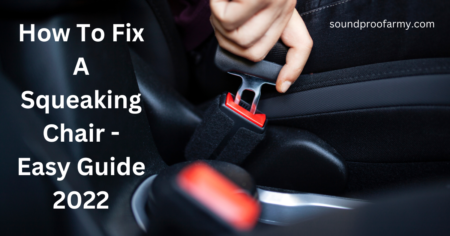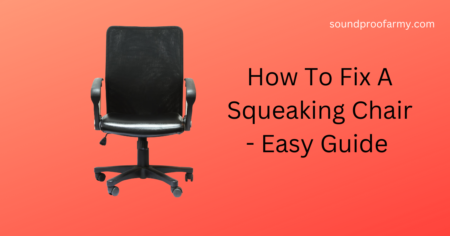A blue switch is also known as a clicky switch due to its loud click noise. You will hear a loud noise when a keystroke is registered on a keyboard with blue switches. Blue switches are louder than others, though, and there are ways to silence the blue switches of a mechanical keyboard even if you do not replace the keys.
Keyboards with blue clicky switches are notoriously loud. Today, we’ll discuss several ways to silent blue switches on your mechanical keyboard, including lubricating your blue switches and changing them., inserting foam inside your keyboard, using O-Rings, and adjusting your stabilizers.
- Lubricate your Blue switches
- Change your switches
- Adjust your stabilizers
- Make use of a desk mat
- Insert foam inside the keyboard
- Use rubber O-rings
Let’s get started.
Table of Contents
How To Silent Blue Switches? A Step-By-Step-Guide
1- Lubricate Your Blue Switches
To lubricate mechanical keyboard blue switches, they must be removed and disassembled to be reassembled. As a quick guide, here’s how you can lubricate the blue switches on your mechanical keyboard:
- With the help of a keycap puller, remove the blue switch caps from the switches.
- With the help of a switch puller, remove the switches from the sockets.
- Make sure that the blue switches are separated using tweezers or a switch opener to prevent damage to them.
- Using a switch lube station is advisable to keep the switches lubricated.
- Use a paintbrush to apply lubricant to each of the switches.
- It is now time to reassemble the switches.
- Reinstall the keyboard switches so that they are in their original positions.
- Place the keycaps back on the switches.
It is important to note that this process can be time-consuming and may take up to two hours, depending on how many switches you have.
2- Change Your Switches
Quieter switches are your best bet to reduce the noise of a keyboard with loud switches. A clicky switch makes a lot of noise. Replacement with quieter ones is the only option. This can be categorized into three main types: linear, clicky, and tactical.
A linear switch or tactile keyboard is best for a quiet keyboard.
- Linear: Smooth keystroke with quiet noise.
- Tactile: A slight bump with moderate noise.
- Clicky: A small bump and loud noise.
A silent switch has small rubber pads on the stem that reduce sound output during keystrokes. You can type stealthily with this. Despite their smooth surface, silent switches have a rubbery feel that makes them feel mushy.
The advantages of silent switches are certainly outweighed by their disadvantages. Switching from a clicky switch to a linear or tactile switch will significantly reduce noise output, which may be an excellent solution.
Replacing your switches can be complex since you must desolder them to remove them. Switches can be easily replaced if you use a hot-swappable keyboard.
3- Adjust Your Stabilizers
Stabilizers prevent the larger keys from rattling and shaking. Adjusting your stabilizers is a great way to improve the sound (and make them quieter). It is a three-step process in which you will be required to a band-aid, clip, and lubricate the stabilizers as part of this procedure.
The entire process of modifying the stabilizer can take an hour or two, but it is worth it in the end. We recommend that you adjust your stabilizers as soon as possible.
4- Make Use Of A Desk Mat
If you want to reduce the sound of your keyboard switches, one of the easiest ways is to use a desk mat underneath your keyboard. Whenever you type on your keyboard, it vibrates your desk, which raises the volume of the sound.
Using a desk mat under your keyboard dampens the vibrations and makes everything much more silent!
5- Insert Foam Inside The Keyboard
Adding foam inside your keyboard also reduces the noise and vibration caused by your keyboard switches, which in turn lowers the volume. A screwdriver and some foam are needed for this method.
To install the foam, you need to unscrew and take apart your keyboard to place it between the PCB and the bottom case. Depending on the keyboard you are using, you may find this process either easy or difficult.
As some keyboards are held together by plastic clips, you’ll need to work around the edges of your keyboard to loosen everything from the keyboard. Some will require you to remove a few screws. Once you’re done, you’ll hear less shaking and spring pings.
6- Use Rubber O-rings
Rubber O-rings are a great way to help reduce the overall decibel level of your keyboard switches with a straightforward method. It is easy to install them, and they have an immediate impact on reducing noise levels as soon as they are installed.
You place the O-rings under your keycaps around the switches. You need to remove the keycaps to install O-rings on blue switches. Each time a keystroke is made, O-rings dampen the sound of the switch upon impact.
They work pretty well. Please be aware that rubber O-rings can make your keys feel mushy and unpleasant to use. Consequently, this method is unsuitable for everyone, as it can negatively affect your keyboard.
Below is the most frequently asked questions related to this topic.
What Are The Advantages And Disadvantages Of Blue Switches When It Comes to Gaming?
Blue switches are often criticized for being too sensitive, which leads to a wide variety of opinions. Even though there are some truths to those statements, they have a bit more nuance. There is no doubt that blue switches are popular. However, they are not ideal for gaming.
The substantial tactile bump on each keystroke prevents you from pressing the keys in rapid succession, thereby giving you less control when playing the game. As well as being distracting when chatting with your teammates, the loud clicks can also be annoying when playing with friends.
What Can I Do To Make My Blues Switches Less Clicky?
An effective way to reduce the clicking sound is to install rubber O-rings inside the keycaps to reduce clacking noises. It is even possible to buy keyboards with the O-rings already installed, but if you don’t have one, then you will need a keycap puller and something to push the rings on with (for example, a flat-head screwdriver).
The Blue switches indeed have the loudest click, but if you want a slightly quieter click, the White switches would also be a good option. Moreover, the White switches are heavier than the Gray ones, so if you type with a heavy hand, they can help prevent you from bottoming out on each keystroke.
Which Mechanical Switch Should You Use?
In general, you will find that the red mechanical switches are smooth and have minimal resistance throughout the key press. In contrast, brown and blue mechanical switches have a tactile “bump” on the way down that lets you know you have pressed the key hard enough.
A blue switch adds a distinct “click” noise like an old typewriter. In the end, it comes down to your preference for which switch is best for you. Those who enjoy classic clicky sounds and feels will like blue mechanical switches. For speed, go with linear (red) switches; for a mix, choose brown switches.
Conclusion
You can reduce the noise level of your keyboard in several ways. Following all of the steps in this article can create a super stealthy keyboard suitable for office and home use. The methods described in this article require more time than others, so they may not be suitable for everyone.
For an easy way to silent blue switches and your keyboard, lubricating blue switches, changing the switches and inserting foam are the best things you can do. Nevertheless, it’s recommended that you try all the methods (even the hard ones) to enjoy and quietly use your keyboard.














